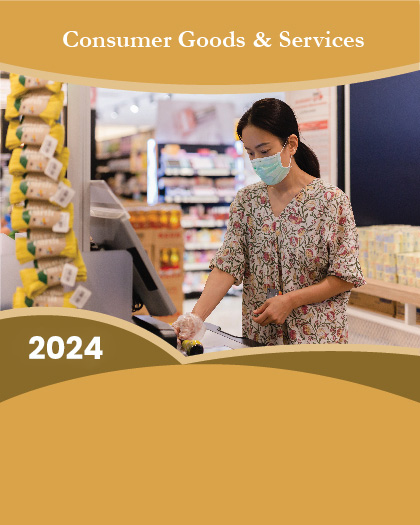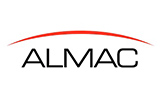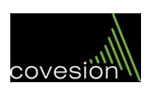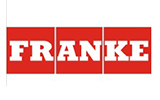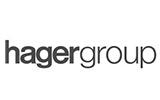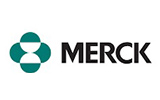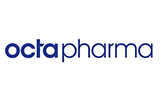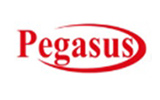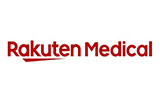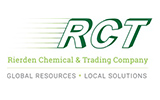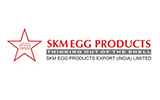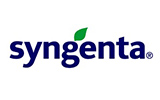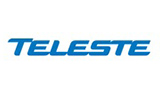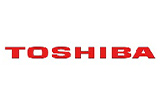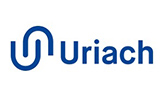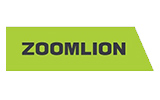1 Tea-based Skin Care Market Overview
1.1 Product Overview and Scope of Tea-based Skin Care
1.2 Tea-based Skin Care Segment by Type
1.2.1 Global Tea-based Skin Care Sales Growth Rate Comparison by Type (2021-2027)
1.2.2 Facial Care
1.2.3 Body Care
1.2.4 Others
1.3 Tea-based Skin Care Segment by Application
1.3.1 Tea-based Skin Care Sales Comparison by Application: (2021-2027)
1.3.2 Online Sales
1.3.3 Offline Retail
1.4 Global Tea-based Skin Care Market Size Estimates and Forecasts
1.4.1 Global Tea-based Skin Care Revenue 2016-2027
1.4.2 Global Tea-based Skin Care Sales 2016-2027
1.4.3 Tea-based Skin Care Market Size by Region: 2016 Versus 2021 Versus 2027
2 Tea-based Skin Care Market Competition by Manufacturers
2.1 Global Tea-based Skin Care Sales Market Share by Manufacturers (2016-2021)
2.2 Global Tea-based Skin Care Revenue Market Share by Manufacturers (2016-2021)
2.3 Global Tea-based Skin Care Average Price by Manufacturers (2016-2021)
2.4 Manufacturers Tea-based Skin Care Manufacturing Sites, Area Served, Product Type
2.5 Tea-based Skin Care Market Competitive Situation and Trends
2.5.1 Tea-based Skin Care Market Concentration Rate
2.5.2 The Global Top 5 and Top 10 Largest Tea-based Skin Care Players Market Share by Revenue
2.5.3 Global Tea-based Skin Care Market Share by Company Type (Tier 1, Tier 2 and Tier 3)
2.6 Manufacturers Mergers & Acquisitions, Expansion Plans
3 Tea-based Skin Care Retrospective Market Scenario by Region
3.1 Global Tea-based Skin Care Retrospective Market Scenario in Revenue by Region: 2016-2021
3.2 Global Tea-based Skin Care Retrospective Market Scenario in Sales by Region: 2016-2021
3.3 North America Tea-based Skin Care Market Facts & Figures by Country
3.3.1 North America Tea-based Skin Care Sales by Country
3.3.2 North America Tea-based Skin Care Revenue by Country
3.3.3 U.S.
3.3.4 Canada
3.4 Europe Tea-based Skin Care Market Facts & Figures by Country
3.4.1 Europe Tea-based Skin Care Sales by Country
3.4.2 Europe Tea-based Skin Care Revenue by Country
3.4.3 Germany
3.4.4 France
3.4.5 U.K.
3.4.6 Italy
3.4.7 Russia
3.5 Asia Pacific Tea-based Skin Care Market Facts & Figures by Region
3.5.1 Asia Pacific Tea-based Skin Care Sales by Region
3.5.2 Asia Pacific Tea-based Skin Care Revenue by Region
3.5.3 China
3.5.4 Japan
3.5.5 South Korea
3.5.6 India
3.5.7 Australia
3.5.8 Taiwan
3.5.9 Indonesia
3.5.10 Thailand
3.5.11 Malaysia
3.5.12 Philippines
3.5.13 Vietnam
3.6 Latin America Tea-based Skin Care Market Facts & Figures by Country
3.6.1 Latin America Tea-based Skin Care Sales by Country
3.6.2 Latin America Tea-based Skin Care Revenue by Country
3.6.3 Mexico
3.6.4 Brazil
3.6.5 Argentina
3.7 Middle East and Africa Tea-based Skin Care Market Facts & Figures by Country
3.7.1 Middle East and Africa Tea-based Skin Care Sales by Country
3.7.2 Middle East and Africa Tea-based Skin Care Revenue by Country
3.7.3 Turkey
3.7.4 Saudi Arabia
3.7.5 U.A.E
4 Global Tea-based Skin Care Historic Market Analysis by Type
4.1 Global Tea-based Skin Care Sales Market Share by Type (2016-2021)
4.2 Global Tea-based Skin Care Revenue Market Share by Type (2016-2021)
4.3 Global Tea-based Skin Care Price by Type (2016-2021)
5 Global Tea-based Skin Care Historic Market Analysis by Application
5.1 Global Tea-based Skin Care Sales Market Share by Application (2016-2021)
5.2 Global Tea-based Skin Care Revenue Market Share by Application (2016-2021)
5.3 Global Tea-based Skin Care Price by Application (2016-2021)
6 Key Companies Profiled
6.1 Lu Ming Tang
6.1.1 Lu Ming Tang Corporation Information
6.1.2 Lu Ming Tang Description and Business Overview
6.1.3 Lu Ming Tang Tea-based Skin Care Sales, Revenue and Gross Margin (2016-2021)
6.1.4 Lu Ming Tang Product Portfolio
6.1.5 Lu Ming Tang Recent Developments/Updates
6.2 Organic Tea Cosmetics Holdings
6.2.1 Organic Tea Cosmetics Holdings Corporation Information
6.2.2 Organic Tea Cosmetics Holdings Description and Business Overview
6.2.3 Organic Tea Cosmetics Holdings Tea-based Skin Care Sales, Revenue and Gross Margin (2016-2021)
6.2.4 Organic Tea Cosmetics Holdings Product Portfolio
6.2.5 Organic Tea Cosmetics Holdings Recent Developments/Updates
6.3 Natura
6.3.1 Natura Corporation Information
6.3.2 Natura Description and Business Overview
6.3.3 Natura Tea-based Skin Care Sales, Revenue and Gross Margin (2016-2021)
6.3.4 Natura Product Portfolio
6.3.5 Natura Recent Developments/Updates
6.4 L'Oreal S.A
6.4.1 L'Oreal S.A Corporation Information
6.4.2 L'Oreal S.A Description and Business Overview
6.4.3 L'Oreal S.A Tea-based Skin Care Sales, Revenue and Gross Margin (2016-2021)
6.4.4 L'Oreal S.A Product Portfolio
6.4.5 L'Oreal S.A Recent Developments/Updates
6.5 Avon Products
6.5.1 Avon Products Corporation Information
6.5.2 Avon Products Description and Business Overview
6.5.3 Avon Products Tea-based Skin Care Sales, Revenue and Gross Margin (2016-2021)
6.5.4 Avon Products Product Portfolio
6.5.5 Avon Products Recent Developments/Updates
6.6 Unilever
6.6.1 Unilever Corporation Information
6.6.2 Unilever Description and Business Overview
6.6.3 Unilever Tea-based Skin Care Sales, Revenue and Gross Margin (2016-2021)
6.6.4 Unilever Product Portfolio
6.6.5 Unilever Recent Developments/Updates
6.7 SkinYoga
6.6.1 SkinYoga Corporation Information
6.6.2 SkinYoga Description and Business Overview
6.6.3 SkinYoga Tea-based Skin Care Sales, Revenue and Gross Margin (2016-2021)
6.4.4 SkinYoga Product Portfolio
6.7.5 SkinYoga Recent Developments/Updates
6.8 Schmidt's Naturals
6.8.1 Schmidt's Naturals Corporation Information
6.8.2 Schmidt's Naturals Description and Business Overview
6.8.3 Schmidt's Naturals Tea-based Skin Care Sales, Revenue and Gross Margin (2016-2021)
6.8.4 Schmidt's Naturals Product Portfolio
6.8.5 Schmidt's Naturals Recent Developments/Updates
6.9 ArtNaturals
6.9.1 ArtNaturals Corporation Information
6.9.2 ArtNaturals Description and Business Overview
6.9.3 ArtNaturals Tea-based Skin Care Sales, Revenue and Gross Margin (2016-2021)
6.9.4 ArtNaturals Product Portfolio
6.9.5 ArtNaturals Recent Developments/Updates
7 Tea-based Skin Care Manufacturing Cost Analysis
7.1 Tea-based Skin Care Key Raw Materials Analysis
7.1.1 Key Raw Materials
7.1.2 Key Suppliers of Raw Materials
7.2 Proportion of Manufacturing Cost Structure
7.3 Manufacturing Process Analysis of Tea-based Skin Care
7.4 Tea-based Skin Care Industrial Chain Analysis
8 Marketing Channel, Distributors and Customers
8.1 Marketing Channel
8.2 Tea-based Skin Care Distributors List
8.3 Tea-based Skin Care Customers
9 Tea-based Skin Care Market Dynamics
9.1 Tea-based Skin Care Industry Trends
9.2 Tea-based Skin Care Growth Drivers
9.3 Tea-based Skin Care Market Challenges
9.4 Tea-based Skin Care Market Restraints
10 Global Market Forecast
10.1 Tea-based Skin Care Market Estimates and Projections by Type
10.1.1 Global Forecasted Sales of Tea-based Skin Care by Type (2022-2027)
10.1.2 Global Forecasted Revenue of Tea-based Skin Care by Type (2022-2027)
10.2 Tea-based Skin Care Market Estimates and Projections by Application
10.2.1 Global Forecasted Sales of Tea-based Skin Care by Application (2022-2027)
10.2.2 Global Forecasted Revenue of Tea-based Skin Care by Application (2022-2027)
10.3 Tea-based Skin Care Market Estimates and Projections by Region
10.3.1 Global Forecasted Sales of Tea-based Skin Care by Region (2022-2027)
10.3.2 Global Forecasted Revenue of Tea-based Skin Care by Region (2022-2027)
11 Research Finding and Conclusion
12 Methodology and Data Source
12.1 Methodology/Research Approach
12.1.1 Research Programs/Design
12.1.2 Market Size Estimation
12.1.3 Market Breakdown and Data Triangulation
12.2 Data Source
12.2.1 Secondary Sources
12.2.2 Primary Sources
12.3 Author List
12.4 Disclaimer

